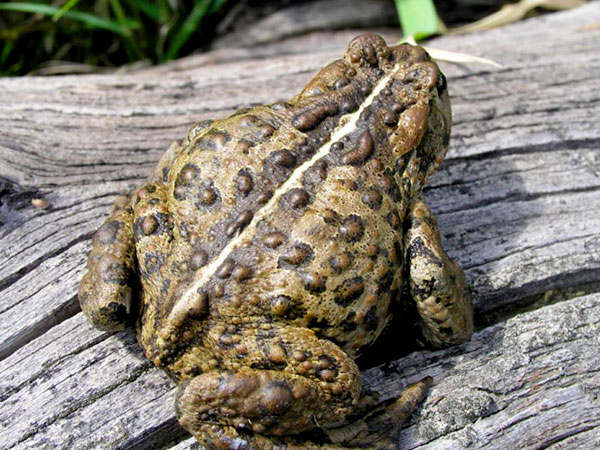
US Forest Service biologists are hoping to find citizen scientists to help track the boreal toad in the Uinta-Wasatch-Cache National Forest. Boreal Toad female, Lost Trail NWR, Flathead County, MT, June 2003. Credit: P.S. Corn / USGS Northern Rocky Mountain Science Center.
The Uinta-Wasatch-Cache National Forest is seeking citizen scientists to help track a special toad in area Forests where it lives.

“The boreal toad is a sensitive species for both the Forest Service and State of Utah,” said Paul Chace a Forest Service Biologist. “The boreal toad is generally found at over 6,000 feet in elevation, has a white dorsal stripe and has a ‘worty’ appearance.”
The toad is endangered in Colorado and New Mexico.
Due to an emerging amphibian disease – chytrid fungus – the toad population is declining. It is known as the only alpine species of toad.
Generally, the adult boreal toads grow anywhere from 2 inches to just over 4 inches long and prefer to live in high-altitude lakes, marshes, ponds, bogs and quiet shallow water. Habitat selection for the western toad is important because they require open water for breeding during May to July.
“Boreal toad tadpoles are jet black in color and generally gather in large numbers in shallow areas of ponds and lakes,” said Chase. “Forest Service biologists are involved in programs to locate boreal toads and identify new locations for the species.”
The Uinta-Wasatch-Cache National Forest continues to utilize the citizen science program to involve the public through participation in organized surveys or casual observations while visiting.
If you decide to help, and are hiking in the forest and discover a boreal toad or tadpole, take a photo, record the location (pond name and/or GPS location) and contact Forest Service biologist Paul Chase at paulchase@usda.gov or 435-755-3629.

